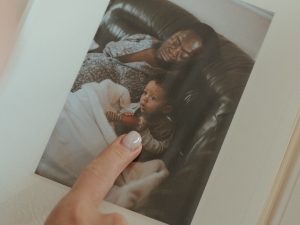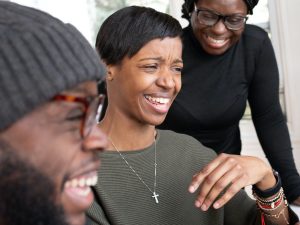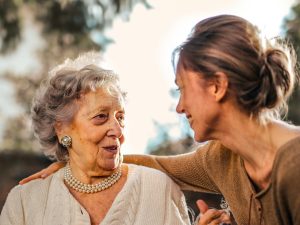
Sincere remembrance and compassion for grief begins NOW with steps that are SIMPLE—VISIBLE—ACCESSIBLE.

All you need: commitment, a candle, and the resource guide

Gather your circle visibly—safely—outdoors

Light a candle in memory of lives lost

Spend focused time together
1. Welcome Those Who Have Gathered

Give people a chance to get settled and comfortable. Offer words of welcome that let people clearly know to it is time to turn their attention toward honor and remembrance. You might suggest that people close their eyes and take a deep breath to help them to slow down and take in the presence of each person and the purpose of the moment.
2. Name the Person/People Being Recognized

Plan who you want to memorialize in advance. Perhaps write the names on something that can be visible throughout your ceremony. You can include family members, friends, neighbors, a teacher or coach, and work colleagues. If you did not lose a member of your family, you probably have friends who did. Say their name(s) aloud. Don’t feel rushed. People will follow your lead.
3. Share Music that Connects You to your Loved One(s)

A favorite song or even a playlist of music that includes favorites of the person you lost can help people in attendance tap into their feelings and memories. Music can give us permission to cry just as it can be soothing enough to allow us to visit grief and loss. You can access music on this site here.
4. Light the Candle

You only need one candle. However, if you are remembering multiple people you might want to prepare to have a candle for each person. Make sure your candle is in a safe, stable place in view of the whole group. Involve a participant by asking them to light the candle. Click here for safety precautions
5. Pray/Sit Still

Reach into your own faith tradition or meditation and reflection practices. Include the traditions and practices of those gathered with you. This might be spoken prayers or jointly reading or reciting prayers together. You can offer guidance that gives people a focus for reflection and stillness. Even young children can be invited to say their own prayer aloud or speak a simple expression of love. Include children in quiet stillness, realizing that the younger they are, the fewer moments they can manage being still.
6. Share Stories about Your Loved One(s) Invite Those Gathered to Share Stories

We honor people by sharing stories and memories. When we tell stories, we ensure that
the most precious attributes of a lost loved one are known by the next generation. Stories help us to find inspiration and resolve to carry forward the best of our loved ones. Anyone present can be invited to share something. You can place a gentle time frame if needed, by saying, “I’d like to invite everyone who wants to participate to share for about 5 minutes each.” If you have the flexibility—let people go and let them build on each other’s memories. You will find tears here, but laughter, too.
7. Activity for Children Who Are Present

You might invite children present to sing together a song they would all know. You can include them in sharing by asking a few questions about the persons you are memorializing that are within their reach. Children can participate by placing personal objects of the person you are remembering or photographs on the table with the candle during the ceremony. Look below for more ideas about involving youth and children.
8. Music, Poem, or other Expression

Read a poem or a passage from sacred text that offers comfort and hope. It might be a favorite text of the person who died or one that reflects their life. You might read a letter written by the person who died or a letter from a family member who can’t personally participate. A song is appropriate here—maybe one the group can all sing together.
9. Final Expression of Thanks

Moments of gratitude are part of memorializing. This is a time to express gratitude for the lives of people you are remembering. You might go around the circle a final time, asking each person to name the one thing they are most grateful for about the person (s) you are remembering. It is important to express thanksgiving for the people who remain and thank people for their personal presence and participation.
10. Close
